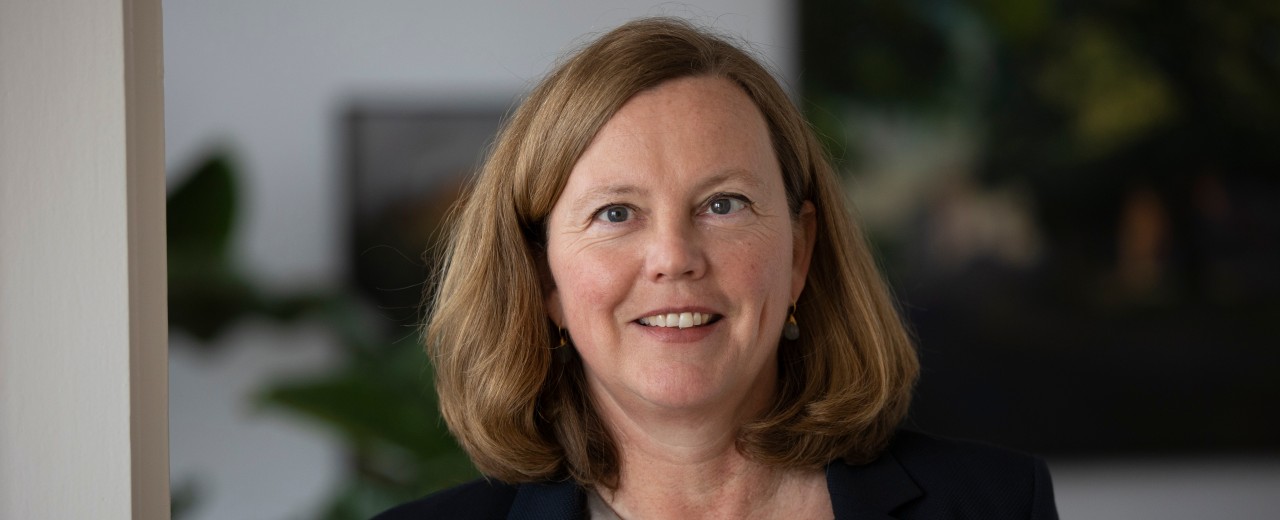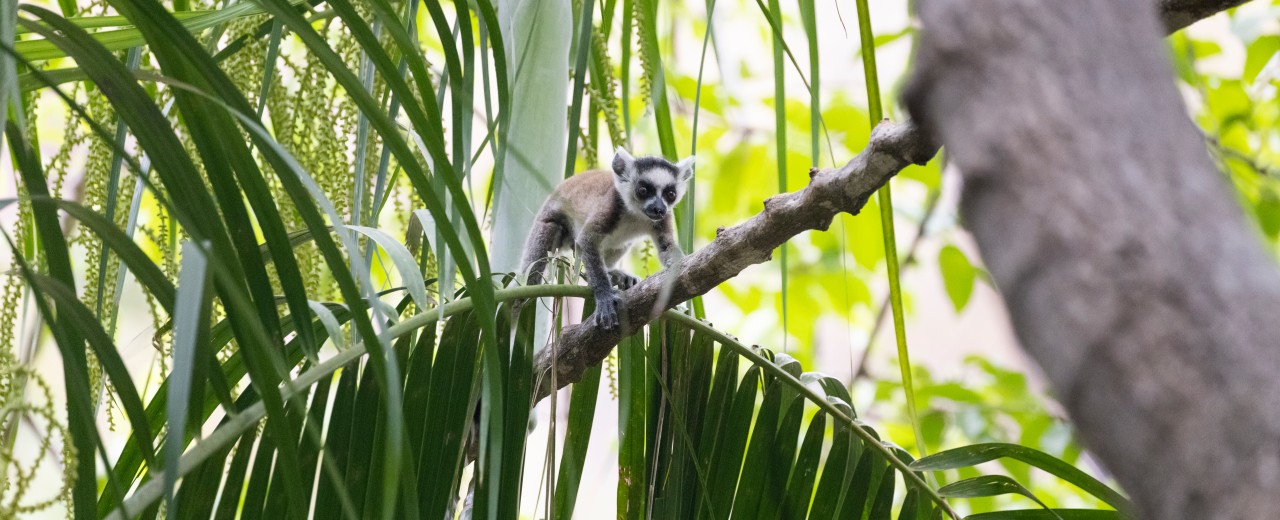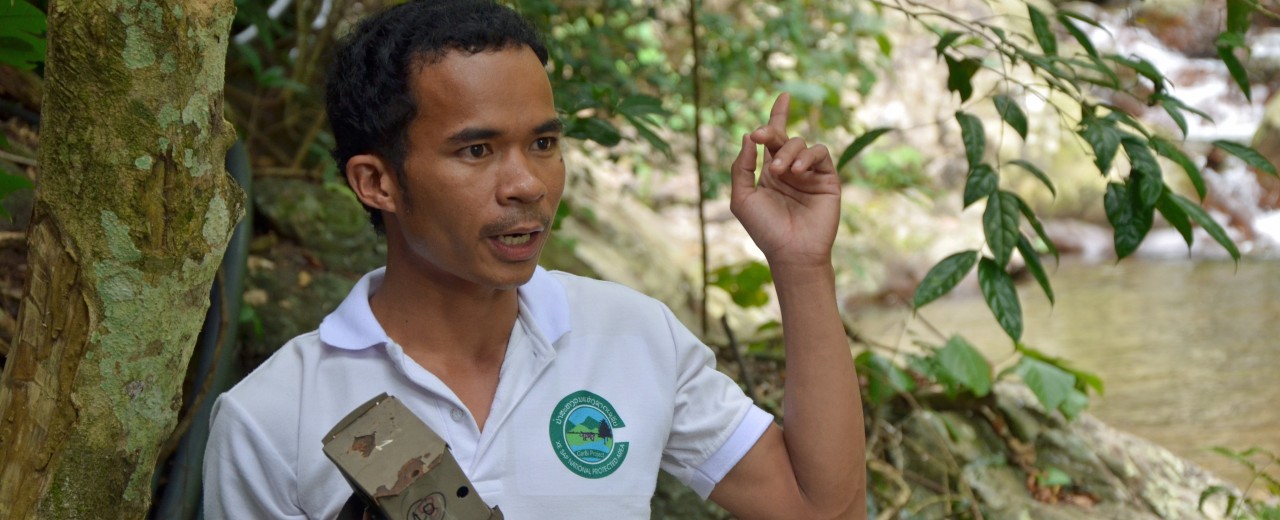Tip: Activate javascript to be able to use all functions of our website
Interview with Stefanie Lang
"From Speech to Action"Stefanie Lang, Director of the Legacy Landscapes Fund, talks to Friederike Bauer about five years of LLF, international biodiversity conservation and why efforts must not stop now.

These are great agreements that were reached in Montreal in 2022 and at the last Conference of the Parties in Cali and Rome. With the “Global Biodiversity Framework” we have specific global targets for biodiversity conservation and now also suitable financial instruments. This is enormous political progress, but it must now be implemented urgently.
As I see it, implementation is very different. Some countries take the designation of protected areas very seriously, such as Colombia, Costa Rica or Namibia. But these protected areas need to be protected with good management, and that needs money. Money that is not yet available. That is why I have doubts as to whether there is already a major turnaround.
In fact, several bilateral donors are withdrawing from international biodiversity protection. Many people are now generally more sceptical about international cooperation, which unfortunately also has an impact on biodiversity financing. This is a very worrying trend, because the global south has rich biodiversity, but not the money to protect it. Failure to protect this global good together will have enormous consequences for all of us.
Biodiversity ensures our survival. Almost everything we humans need for living and working comes from nature: air, water, food, but also medicines and raw materials such as plaster or wood. According to calculations by the World Economic Forum, more than half of global GDP depends in some way on nature. This also applies to German and European companies. According to the European Central Bank, just over two thirds of all European companies outside the financial sector are highly dependent on functioning ecosystems. This means that the decline of nature will eventually have massive consequences for all of us; for example, when drinking water becomes scarce or food becomes extremely expensive. Unfortunately, these facts can easily be suppressed, because nature dies quietly.
Exactly, biodiversity is dying quietly and steadily. An insect here, a plant there. This is not always the same, but since everything is connected and interdependent, this natural safety net will eventually no longer be able to hold. Then nature can no longer provide certain services. We often only notice this when it is too late – when pollinators are suddenly missing from the fields. That is why it has always been difficult to draw people's attention to this. And today, in times of so many different crises, this has become even more complicated. The figures are alarming. We are in the middle of the sixth mass extinction; there is absolutely nothing to gloss over.

There is. This is a global crisis, but it has a proven solution: we need to let nature do it. And, unlike climate change, the positive effects are felt relatively quickly. Protected areas or renaturalisation help immediately. If an ecosystem has not yet been completely destroyed, nature can usually recover well. We have seen this, for example, after the international whaling agreement – the whale population has stabilised. We see this in forests that regenerate and increase when we stop fragmentation or deforestation. This means that we know that nature conservation helps – but we have to put this knowledge into practice.
In order for a protected area to actually fulfil its function, it needs a good management plan that is best based on scientific data. What animals and plants are there? What are the risks? What needs to be done? How much does it cost? Which forms of use make sense? These and other issues must be taken into account in such a management plan, and it must be agreed with all the stakeholders. This requires involving authorities, scientists and local people. Local knowledge is also important. We now know that "fortress conservation" doesn't work behind a high fence. In the end, the management of a protected area must be solidly financed and constantly monitored. This is often lacking.
Because they are very important for nature conservation. Many indigenous peoples have been caring for their natural environment for generations and possess a great deal of so-called traditional knowledge. Both make them important actors in nature conservation. However, the conditions for the participation of indigenous peoples are very different. Some are well organised politically, others are not; some have land rights, others do not. In some countries they enjoy great rights, in others they have a difficult position. We must take a close look at the situation and always seek to involve them and strengthen their rights.

We have taken this step very consciously, responding to the importance of indigenous peoples and local communities. They are essential for the protection and conservation of nature and have so far received little direct funding. From 2027, organisations can receive USD 1 million per year from the LLF for more than 15 years. With direct financing of this magnitude, we are breaking new ground, even in international comparison.
We set out to promote at least 30 large landscapes with a million dollars per year by 2030. Meanwhile we are financing 15 landscapes, soon the contract for another area, Nyika-Vwaza in Malawi, will be signed. The running costs of these 16 protected areas are thus substantially covered, six of them receive funding for an eternity, and 10 receive sustainability funding over 15 years. Other donors have also joined: France, Norway and the United Kingdom. This is very important because it creates a broad and international base of support. The LLF is becoming better known and there are more and more requests for financing. This shows that this model for nature conservation is attractive. Our endowment now stands at almost EUR 400 million. Originally, we wanted to reach EUR 1 billion by 2030. So we still have some way to go.
We had a buoyant initial phase, then the pace of participation slowed down a bit. We hope that we can return to the momentum of the beginning. There is enough demand.
Because we are a small, powerful and very effective organisation with a special mandate. Our administrative costs are low, as various audits have confirmed. We are promoting huge areas, some of which are as big as Switzerland. These consist not only of protected areas, but also of the landscapes around them. It is always about a clever interplay of protection and use. We also pay out a million dollars a year with long-term predictability. This is important because stop-and-go funding, as is often the case, is not a good concept for sustainable nature conservation. Our amounts do not cover all costs, but the regular basic costs, such as personnel, infrastructure, energy or equipment – which is essential for the good management of a protected area. We also combine public money with private money.
Absolutely – that's also the feedback we're getting from outside. And we are constantly evolving. For example, we are cooperating with universities such as Yale and ETH Zurich to improve satellite-based monitoring. We also develop formats for exchange and learning within all programmes in our portfolio. We do not stop but are in a permanent learning process. This is also a special feature of the LLF.
Share page
To share the content of this page with your network, click on one of the icons below.
Note on data protection: When you share content, your personal data is transferred to the selected network.
Data protection
Alternatively, you can also copy the short link: https://www.kfw-entwicklungsbank.de/s/enzB8K13
Copy link Link copied